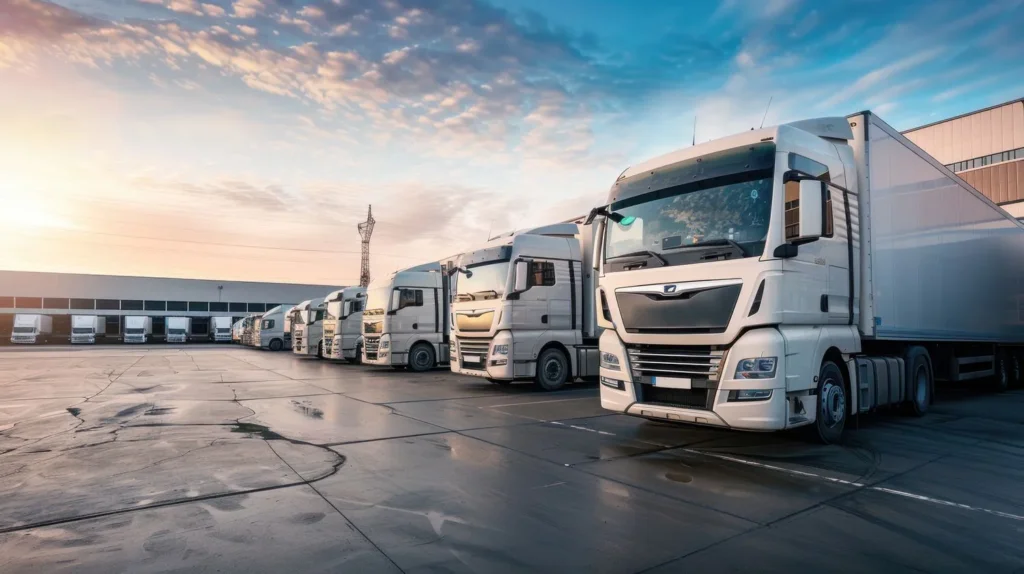The webinar, held ahead of this year’s RailFreight summit in Warsaw, kicked off with Michal Litwin, a board member of the European Rail Freight Association, running through some key figures from the Polish market last year. According to Litwin, volumes increased slightly last year to 62 billion ton kilometres – up 1 billion on the year before.
When asked if the figures were an indication of stability in the market, Litwin said there was a “slow transition” in motion whereby less coal was being transported, but general cargo was increasing.
Track access charges curtailing growth
Although things may appear relatively stable in terms of volumes, Litwin added that the industry was struggling to increase its market share. As for why this was the case, Litwin underscored the challenges posed by track access charges in particular.
“Track access charges are a major issue,” said Litwin, who went on to stress that the charges are significantly higher on a per ton basis than road tolls:
“Imagine a situation where the share is slightly above 10% of total cargo transportation. Meanwhile, public income from toll collections from road and rail is almost equal. It means that on average, when having transported one ton by rail, you pay on some 9 to 10 times more.”
Re-emphasising the importance of track access charges, not only in Poland, but across Europe, Litwin added: “access charges are the easiest way to support us in that area [growing rail freight volumes] because they’re purely a political and fiscal decision”.
The limitations in the existing infrastructure represent another barrier to growth in rail freight in Poland. In Litwin’s opinion, the country is not ready to transport massive volumes of grain. Moreover, Litwin noted that Poland has a shortage of train drivers, particularly as the current generation of drivers is retiring.
The potential impact of the new administration in Poland
As regards what the new Polish Government could mean for rail freight in the country, Litwin referred to Piotr Malepszak, the new Deputy Minister for Rail Transport in Poland, as a “great railway expert” who has good technical and economical understanding of infrastructure.
Litwin added he was sure that Malepszak would want to bring about quality improvements to infrastructure.
“I’m expecting less wasted money and better infrastructure, reconstruction and maintenance products,” said Litwin.
On the other hand, Litwin stated that there are question marks as to how much Malepszak will be able to provide support. He said that due to the turbulent times we are facing today, namely the economy, inflation, and the war in Ukraine, there may be other spending priorities for the Polish Government.
In terms of what has been done more recently, Litwin referred to some projects that had cost a lot of money but brought limited value, such as a reconstructed stretch of line cutting journey times between Warsaw and Poznan by just 5 minutes.
One factor that could determine the extent of public investment in Poland will be whether its government can unlock the EU development funds that were frozen during the previous administration’s time in office.
“Now with the new government, there is expectation that these funds will be released and this will help investments – both in infrastructure and rolling stock,” stressed Litwin.
However, the change of administration may also hinder the rail freight plans that are part of the proposed mega project to build a massive global hub airport between Lodz and Warsaw.
“It’s a really important question what will really happen, because this plan was really massive. We were assuming construction of 2,000km of new high speed railway lines by 2040,” added the board member of the European Rail Freight Association.
Sophia Nina Burna-Asefi, an associate at The Risk Advisory Group, was the second speaker to offer insights at the webinar.
She echoed Litwin’s in her comments regarding the new Polish Government, adding:
“I think the main challenges that have to be on your radar is to see how the current government really enforces and prioritises projects, particularly rail freight transport.”
Burna-Asefi also stressed the challenges faced by Central and Eastern European countries in terms of ageing infrastructure, sustainability, and the need for better connectivity.
How rail freight could serve increased demand from major cities
Another challenge Burna-Asefi touched on is the ongoing urbanisation of societies, which is changing logistical patterns:
“A common issue facing all European, and indeed worldwide countries, is a more pronounced tendency towards urbanisation. That means there’s larger cities, more population size, and also more demand for shippers and cargo being transported,” said The Risk Advisory Group associate.
In order to address this growing urbanisation, Burna-Asefi believes it will be key to combine intermodal transport hubs with the Trans-European Transport Network (TNT).
As a means of bringing about this change, Burna-Asefi highlighted the importance of government-industry dialogue, identifying local partners, analysing country stability, and assessing the quality of existing and proposed infrastructure.
On a positive note, Burna-Asefi identified key projects, including Rail Baltica, the Baltic Adriatic Corridor, and the Central East Central European Transport Corridor, as vital for the region’s development.
Finally, in the context of geopolitical challenges, Burna-Asefi addressed concerns about sanctions and highlighted complexities in transporting goods through Russia. She emphasised the necessity for greater clarity in government-industry dialogue, adherence to best practices, and precise documentation to navigate the dual-use nature of certain goods under sanctions.
Photo credit: PetrS., CC BY-SA 4.0, via Wikimedia Commons









